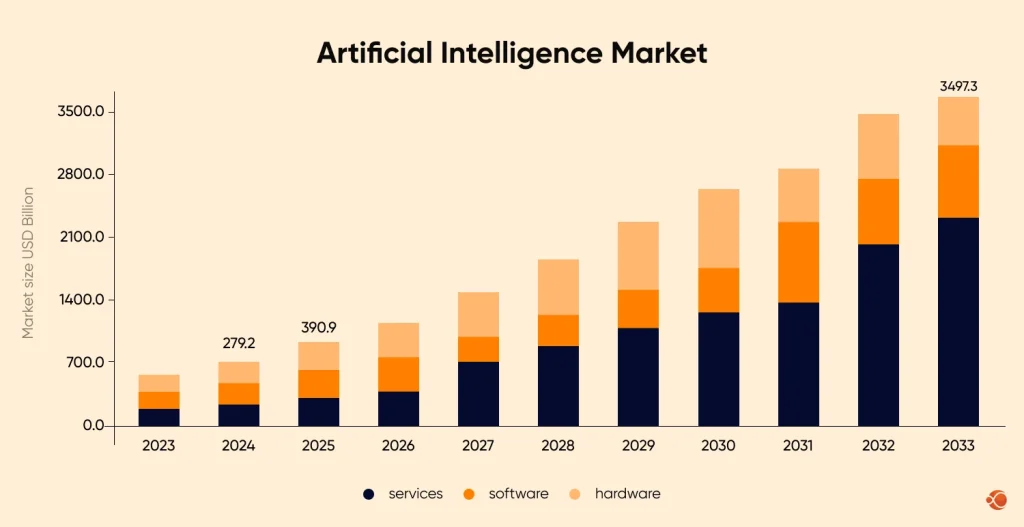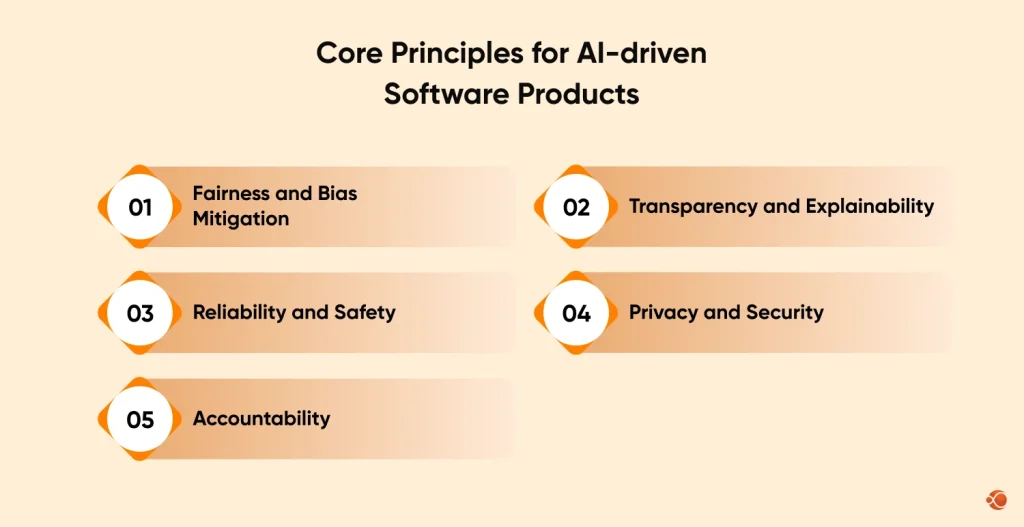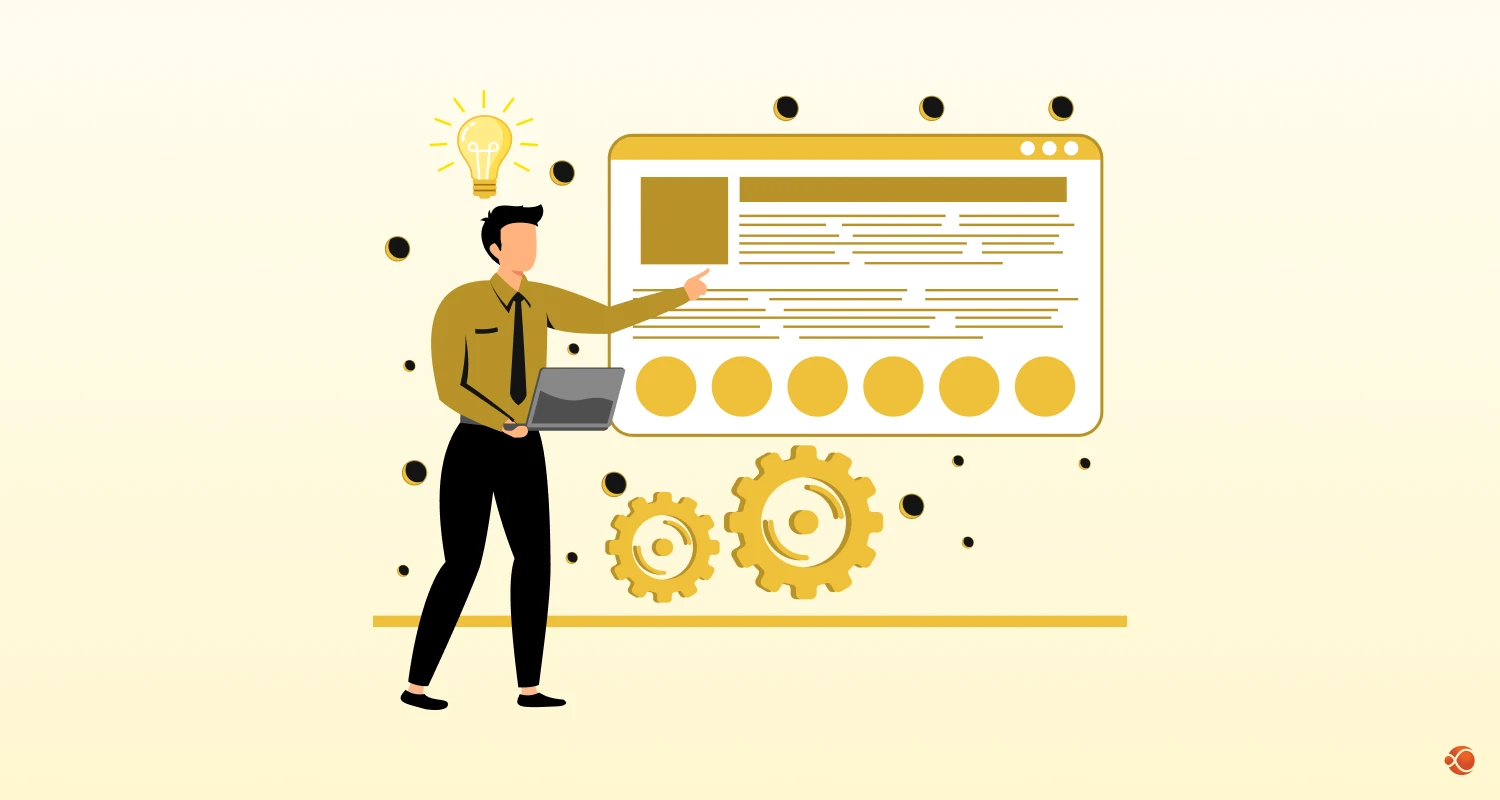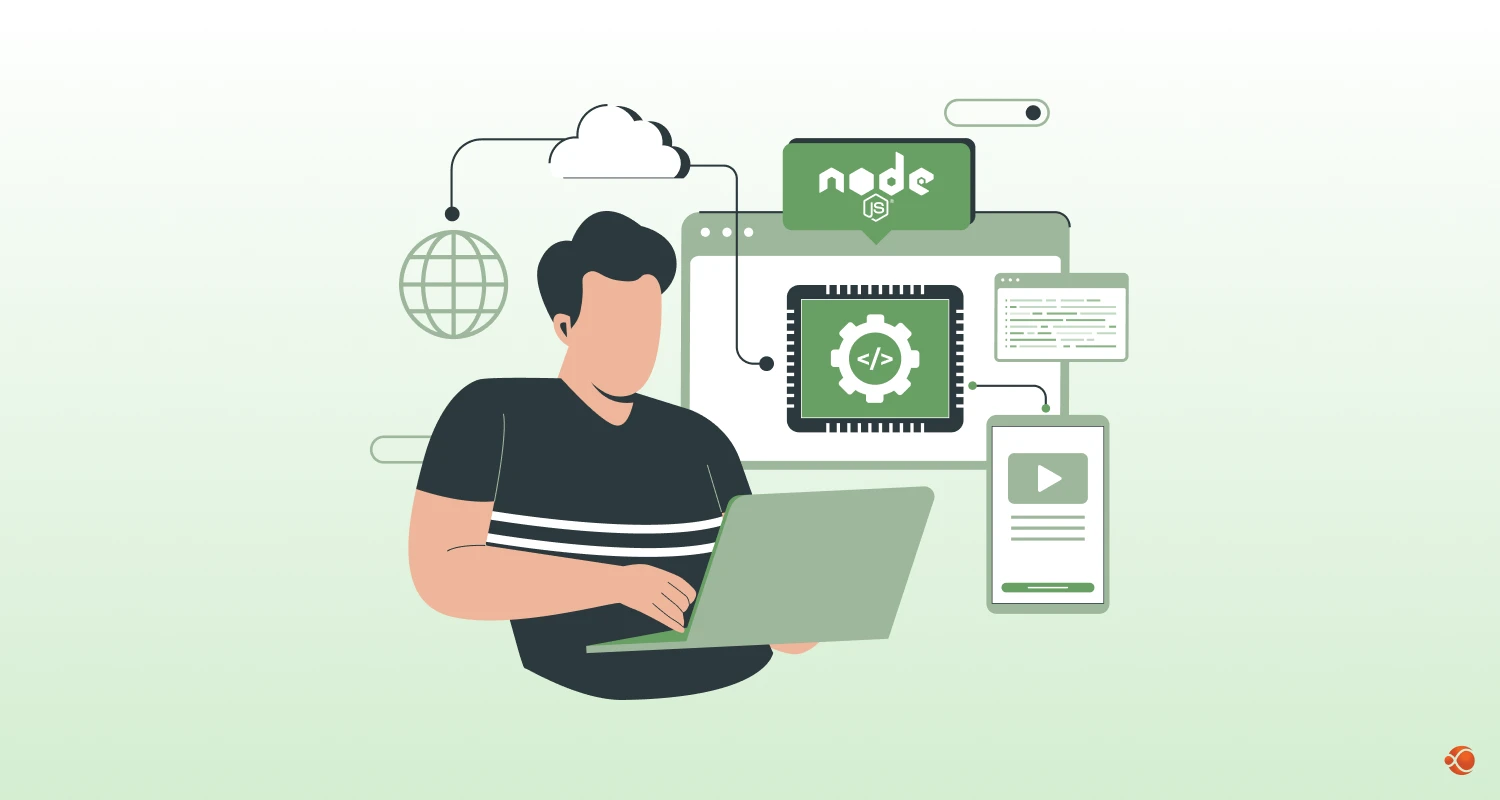Quick Summary: How is AI reshaping the way software gets built? The AI software development process now handles everything from code generation to bug detection, cutting down manual work while boosting speed and quality. But the real shift isn’t just faster delivery, it’s how developers work, what products can do, and where this technology is headed next.
It was long ago that the whole idea of AI writing production-ready code felt like something out of science fiction. Today, that narrative has completely changed. For many years, software development has been a methodical, human-intensive process. But the demands of the modern digital world, faster delivery cycles, hyper-personalized experiences, and zero-bug tolerance have pushed traditional methods to their limits.
Now comes artificial intelligence; it’s not just a fancy tool for developers, it’s a game-changer that is fundamentally transforming the AI software development process itself. The global artificial intelligence (AI) market size was estimated at USD 279.22 billion in 2024, and it is projected to grow to USD 3497.26 billion in 2033, expanding at a CAGR of 31.5% from 2025 to 2033.

This transformation is deeper than just auto-completion in an Integrated Development Environment(IDE). AI is now an active participant across the entire AI software development life cycle (SDLC), enhancing human capability and enabling unparalleled levels of quality and speed. This shift is redefining what software engineers do, what software can do, and how quickly value is delivered to the user.
Let’s break down the role of AI in software development process, from the initial idea to the final product.
Role of AI in the Software Development Process
The power of AI in software development isn’t restricted to a single phase, but it’s in the continuous integration of machine learning (ML) from beginning to end. By embedding AI into every stage, companies can achieve a truly optimized and accelerated AI SDLC. Organizations looking to maximize this transformation often start with AI consulting services to identify where AI can deliver the most immediate value across their development pipeline.
Smarter Planning and Requirements Gathering
Before a single line of code is written, a development project needs clear direction. Traditionally, this meant extensive meetings and manual documentation. Today, AI models can analyze huge amounts of customer feedback, support tickets, and market data to automatically identify unmet user needs or potential high-value features. This data-backed approach guides product managers toward features that provide the greatest Return on Investment (ROI). Furthermore, tools can process natural language requirements documents and automatically highlight ambiguities, inconsistencies, or conflicts, ensuring the blueprint for the software is clean and clear before development begins.
AI-Driven Design and Architecture
Designing the architecture is one of the most important and complex phases, where mistakes are costly to fix later. Artificial intelligence can analyze functional requirements and predict the most perfect way to structure a system, suggesting optimal boundaries for microservices to minimize latency and maximize scalability.
For repetitive tasks, AI tools can review the system’s needs and suggest the most appropriate, proven design patterns, ensuring the architecture is sound and maintainable. This cuts down on unnecessary rework and strengthens the long-term health of the codebase.
Assisted Development and Code Generation
This is perhaps the most visible application of AI in the SDLC. The increase of AI coding assistants has fundamentally changed the daily routine of a developer. Beyond simple suggestions, tools are now context-aware, suggesting entire blocks of logic, boilerplate code, or even whole functions based on the developer’s intent. This dramatically reduces the need for more complex problem-solving. AI can also help translate code between languages or suggest ways to refactor old code into modern, optimized structures, which speeds up technical debt repayment and migration projects.
Intelligent Testing and Quality Assurance
Testing can be a bottleneck, but AI is making Quality Assurance (QA) faster, smarter, and more exhaustive. Artificial intelligence can analyze the source code and generate a complete suite of unit, integration, and even UI test cases, achieving coverage that would take a human team weeks to build manually. Machine learning(ML) models, trained on historical project data, are used for predictive bug detection; they analyze newly written code and flag sections most likely to contain defects. Crucially, AI in software development life cycle tools can adapt to minor UI changes automatically (like a button’s ID changing), adjusting the test script on the fly to prevent needless test maintenance.
Automated Deployment and Operations
The shift from development to operations (DevOps) is being streamlined by AI, paving the way for autonomous systems. AI analyzes server load, traffic patterns, and historical deployment success rates to recommend the optimal time for a new release, minimizing the risk of a high-impact outage. In production environments, AI in software development monitors system logs and performance metrics to detect any deviation from normal behavior, often before the issue becomes a major problem.
Continuous Maintenance and Optimization
Software maintenance consumes a huge portion of the development budget. AI helps to make this process more effective and efficient. AI can identify security vulnerabilities, suggest the necessary code patches, and even generate the pull request for a human to review, automating a critical security process. In cloud environments, AI can dynamically scale resources up and down based on real-time and predicted user demand, making sure peak performance while lowering cloud expenditure.

Benefits of AI in Software Development
The integration of AI is not just a passing trend; it provides measurable, tangible advantages of AI in software development that directly impact a company’s competitive edge.
Faster Delivery, Higher Productivity
The most immediate impact is on speed. By automating certain repetitive tasks, developers can focus their cognitive energy on solving complex, novel business problems. Imagine a developer who used to spend 40% of their time on boilerplate code; with an AI assistant, that time significantly drops. This massive productivity gain translates directly into a faster time-to-market for new features and products, which is important for staying competitive.
Cleaner Code, Fewer Bugs
Humans tend to make mistakes, and on the other hand, AI operates on logic and learned patterns. AI tools consistently enforce coding standards, automatically spot common security flaws, and suggest best-practice patterns. This leads to codebases that are more consistent, secure, and maintainable, meaning less technical debt is accrued over time. Fewer bugs mean less time spent on hotfixes and lower operational stress, allowing the team to concentrate on innovation.
Data-Backed Decisions That Improve Outcomes
The traditional process often depends on limited data samples and human intuition for critical decisions. AI replaces this guesswork with predictive modeling. Understanding artificial intelligence in digital transformation is key here; AI doesn’t just improve individual processes, it fundamentally changes how organizations compete and deliver value in the digital economy.
AI can forecast based on historical data and requirements, helping project managers allocate the right amount of developer time. By analyzing thousands of pull requests and their subsequent bug reports, an AI can precisely flag high-risk code changes, making sure they receive the most rigorous review and testing.
Which AI Tools Developers Are Actually Using in Software Development
The practical application of AI in software development is happening through a growing ecosystem of powerful, user-friendly tools. These tools are democratizing AI’s capabilities, making them accessible to any developer.
Top 5 AI Tools Used in Software Development
- GitHub Copilot: A pioneer in the space, Copilot is an AI coding assistant that suggests code snippets, whole lines, and even entire functions right inside the IDE. Trained on billions of lines of public code, it drastically improves developer productivity by turning natural language comments into executable code.
- Amazon Q Developer (Amazon CodeWhisperer): This tool, which was formerly known as Amazon CodeWhisperer, provides context-aware code completion, specifically helpful for developers working with Amazon Web Services (AWS). It can suggest code for common tasks like connecting to an S3 bucket or managing a Lambda function, acting as an expert AWS consultant inside the code editor.
- Kubeflow: A crucial tool for the AI life cycle. Built on Kubernetes, it makes it easier to deploy, scale, and manage machine learning workflows (training, serving, and monitoring models) in a production environment. For teams building AI-powered product development, this is key for getting models into customer-facing applications.
- Azure AI: Microsoft’s platform offers extensive machine learning services that developers can use to embed intelligent features directly into their applications.
- Tabnine: A deep learning-powered tool that offers real-time code completion across multiple programming languages and frameworks. Unlike simpler autocompletion, Tabnine learns from the user’s specific project structure and code style, providing highly relevant and personalized suggestions.
AI Software Development Tools Matched to User Needs
| Tool | Best Fit Audience |
| GitHub Copilot | General software developers, teams working across multiple languages, startups needing speed |
| Amazon Q Developer | Cloud engineers, AWS-heavy development teams, enterprise IT departments |
| Kubeflow | Data scientists, ML engineers, AI product teams |
| Azure AI | Enterprises adopting AI, product teams in finance, healthcare, retail |
| Tabnine | Development teams handling large codebases, polyglot programmers, junior dev onboarding |
How AI Is Reshaping the Software Product Itself
The change isn’t confined to the backend process; it’s radically altering the front-end product that users interact with. AI is transforming traditional software from passive tools into intelligent, adaptive, and predictive experiences. This is the heart of the new AI product development process.
Hyper-Personalization
Generic software is becoming obsolete. Users now expect their applications to understand them, their context, and their unique preferences. AI analyzes a user’s past behavior, screen time, and feature usage to adjust the user interface (UI) dynamically. For example, a financial app might bring up investment tracking to the homepage for a frequent checker, while prioritizing bill pay for another user. Recommendation engines have evolved into highly sophisticated models that predict consumption habits with stunning accuracy, be it products, news, or streaming content.
Intelligent Features
The barrier to embedding complex AI capabilities into an app has plummeted. Features that once required a dedicated, multi-year AI team are now accessible through easy-to-integrate APIs. For companies serious about building these next-generation products, they may choose to hire AI developers who specialize in embedding machine learning capabilities directly into user-facing applications.
All modern customer service bot, language translation features, and sentiment analysis tools are powered by Natural Language Processing(NLP), allowing applications to understand and generate human language. Moreover, computer vision allows products to “see.” Applications can automatically tag and categorize photos, enable visual search, and provide document scanning and data extraction.
Predictive Insights
The future of software is moving from reactive to proactive. The best AI products anticipate what a user needs before the user even expresses it. A calendar app, for instance, might notice a user always runs late for a specific recurring meeting and automatically factor in a travel buffer.
Additionally, SaaS platforms use AI to analyze usage patterns and predict. This early warning signal allows the human retention team to intervene with targeted support or offers.
Autonomous Software
The final frontier is software that can make decisions and evolve its own parameters without constant human supervision. Algorithmic trading bots monitor markets, adjust their strategy, and execute trades based on new data in milliseconds.
Adaptive security systems are another prime example; cybersecurity software uses machine learning to identify zero-day threats by recognizing abnormal network behavior, then automatically creates new rules to block the threat without waiting for a human analyst to write a patch.
How the Developer’s Role Is Changing in the AI Software Development Process
Introduction of AI is not replacing the developer; it is elevating them, fundamentally redefining the skills and focus required for a successful career.
From Coder to Architect and Strategist
As AI software development services take on the grunt work, the boilerplate code, the unit tests, the simple bug fixes, the human developer’s value proposition shifts up the hierarchy of needs. The developer of the future spends less time on syntax and more time on business requirements, high-level design, and strategic problem-solving. They become the architect, designing the complex systems that the AI will then help to implement. Consequently, the core skill is no longer just writing code, but understanding how to integrate complex AI models, large data pipelines, and legacy systems to create a cohesive, high-performing product.
Working Side by Side with AI Tools
The most effective developers of the next decade will be those who master the art of working with AI coding assistants. They will view artificial intelligence not as a competitor but as a highly capable, tireless co-worker. Developers need to learn the weaknesses and strengths of tools like CodeWhisperer and Copilot. They must be able to guide the AI with precise comments and critically evaluate the suggested code for security, correctness, and efficiency. The skill is no longer writing the perfect code, but curating the perfect code.
Upskilling to Stay Relevant in a Hybrid Workflow
Nowadays, data literacy is becoming a must-have skill for developers, requiring them to understand how the AI models are trained, what their data biases might be, and how to structure data for machine learning. Similarly, knowledge of ethical AI principles, including fairness, bias mitigation, and transparency, is crucial. A developer today must be able to deploy an AI-powered feature that is not just functional but also ethically sound.
Core Principles for AI-driven Software Products

As AI products become more powerful, the need for a strong ethical and practical governance framework becomes important.
Fairness and Bias Mitigation
AI systems learn from biased training data, and developers must actively work towards identifying and reducing harmful biases to make sure equitable outcomes. For instance, a hiring tool must avoid discrimination, and developers must continuously monitor the AI’s outputs for signs of bias.
Transparency and Explainability
For users and stakeholders to trust an AI system, its behavior should not be a black box. For critical applications, the system’s decision-making process should be explainable so a user or auditor can understand how the AI arrived at a particular conclusion, like providing a clear reason for a denied loan application.
Reliability and Safety
The AI system must perform consistently and predictably. For critical systems like an autonomous vehicle, the artificial intelligence must undergo rigorous testing to make sure it can respond safely to all conditions, with continuous monitoring to detect performance degradation.
Privacy and Security
Businesses must protect the data processed by their AI systems, adhering to privacy laws and implementing strong security protocols. For a healthcare AI product, sensitive information should be anonymized and encrypted with strict access controls.
Accountability
Developers who develop and deploy AI systems are responsible for the outcomes. This requires establishing clear lines of responsibility and a governance framework for the AI product, such as an AI governance committee to oversee its ethical deployment and alignment.
How to Integrate AI in Software Development?
Integrating AI into an existing application or building a new AI-powered product from the ground up involves a structured approach. The process requires identifying a problem AI can solve, preparing data, training a suitable machine learning model, and then integrating that model into the application’s architecture using APIs.
Many companies begin this journey with AI PoC development services to validate their approach in a controlled environment before committing to full-scale implementation. It’s a repetitive process that demands expertise in both software engineering and data science to make sure the model performs accurately and scales reliably.
Future of AI in Software Development
The current revolution is just the beginning. The next five to ten years promise a quantum leap in the sophistication and autonomy of AI within the software ecosystem.
Code Generation and Refactoring
Generative AI assistants (like Copilot tools) now write vast amounts of boilerplate and routine code based on natural language prompts, dramatically increasing developer productivity. AI is also becoming proficient at large-scale refactoring, modernizing codebases, and migrating code between programming languages.
Automated Testing and Quality Assurance
AI is used to automate the most time-consuming aspects of QA, including generating comprehensive test cases, performing self-healing on flaky tests, and conducting advanced bug detection and root cause analysis (RCA). This allows developers to catch bugs and fix them earlier in the development cycle.
Rise of Autonomous Agents
The trend is moving beyond human-AI collaboration (copilots) toward agentic AI. Autonomous agents are designed to handle entire development tasks, from analyzing a support ticket to planning the solution, writing the code, running tests, and submitting a pull request, with little to no human input. Businesses are adopting modern software development methodologies specifically designed for AI workflows.
DevOps and Deployment Optimization
AI is woven into Continuous Integration/Continuous Delivery (CI/CD) pipelines to predict performance bottlenecks, optimize build times, and analyze deployment metrics for real-time risk assessment, thereby streamlining the software release process.
Why Choose CMARIX for AI-based Software Development?
Navigating the transition to an AI-powered software development process requires a partner with a deep understanding and expertise in both traditional, high-quality engineering and cutting-edge machine learning. CMARIX combines decades of software craftsmanship with modern AI capabilities, making sure your final products are not just fast but built smart. Our complete AI software development services cover everything from integrating AI code assistants to developing fully autonomous features, helping you utilise the benefits of AI in software development to achieve competitive leadership.
Final Words
The era of AI software development process is not about replacing human ingenuity; it’s about amplifying it. The most successful teams won’t be those with the most AI tools, but those who strike the perfect balance: human creativity amplified by AI efficiency.
The role of AI in digital transformation is to eliminate the mundane and the repetitive, freeing developers to focus on the truly hard problems. By adopting this technology and sound ethical principles, organizations can build cleaner, faster, and ultimately smarter products that deliver unparalleled value. Whether you’re scaling existing capabilities or exploring AI integration for the first time, choosing an ideal software development service can make a huge difference between a false beginning and a successful transformation. The future of software is collaborative, and AI is the most powerful co-pilot yet.
FAQs for AI in Software Development
How to Use AI Software Development Process?
AI can be integrated at every stage, from planning and code generation to testing and deployment, by using specialized tools and platforms that automate repetitive tasks and enhance decision-making.
How does AI impact the Software Product Lifecycle?
AI touches every phase of the lifecycle, from requirements gathering and design to maintenance and scaling, making each stage faster, more accurate, and more data-driven.
What are the Challenges of Integrating AI into Development Workflows?
The main challenges include managing data quality, ensuring model accuracy, handling the learning curve for new tools, and balancing automation with human oversight to maintain code quality and ethical standards.
How AI Enhances the Development Process?
AI accelerates development by automating code generation, identifying bugs before they reach production, and enabling teams to focus on creative problem-solving rather than day-to-day tasks.
How is AI Transforming the Software Development Process?
AI is shifting development from manual, time-intensive work to automated, intelligent workflows that predict issues, generate code, and optimize performance in real-time.







